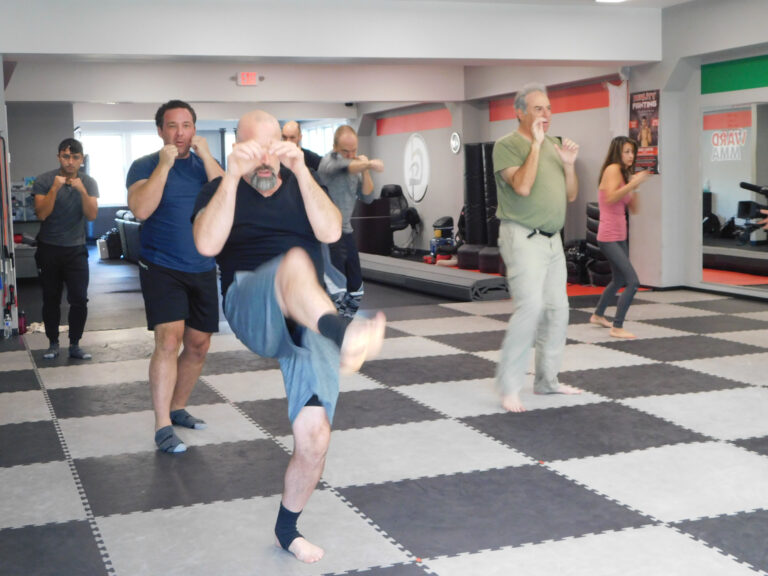There’s a story I was once told while attending a class by my Krav Maga instructor, Alan Feldman (direct student of Krav Maga system founder, Imi Lichtenfeld). Alan spoke of an occasion when a person was trick-or-treating during Halloween and the house that was approached was unwelcoming to trick-or-treaters. The owner of the house decided it was only fair to hurl a pumpkin at the inbound children.
Alan, in his usual Socratic manner, paused and then asked us what the proper defense would be for such an attack. We were all stumped, as anyone might be. He proceeded to smile and tell us: “There is no pumpkin defense!”
This launched us into a deeper discussion distinguishing between point solutions to specific attacks and applying the principles of the system to every attack.
Self-defense, as we have discussed in the past, is nothing more than bringing a few moments of structure during a time of violent chaos. It’s near impossible to identify every type of attack that might befall you in any given moment. By the time you have evaluated all the different factors, you would be hard-pressed to be able to execute any specific technique in time.
Krav Maga, on the other hand, is a principle-based system. It is most useful in making sure we focus on the basic strategies which are the framework for all levels from white belt to black belt/beginner to advanced: Moving off the line of attack, simultaneous offense and defense, attacking tender areas of the human body, using weapons of convenience whenever available, and moving to safety at first opportunity are just a few examples of key elements that transcend any specific attack and apply to almost all situations.
Many martial arts systems focus heavily on specific drill work so that students may learn by rote. There are advantages to this of course (building muscle memory is an example), but the downside is trying to conform to a drill-based defense when the inbound attack does not conform to the specific movement pattern. All of this happening, of course, during stress and duress.
So, the advice I give to all who study self-defense, whether it be Krav Maga or another self-protection discipline, is to allow yourself to expand your thinking beyond the sequence that is being drilled on the mats and ask yourself “What underlying principles am I leveraging?”
Once we focus and apply these key principles, I believe you will see that the opportunity to successfully defend and exit a situation becomes much easier. The last thing we need while under attack is the added stress of trying to remember a specific technique from a class that happened some time ago. That hesitation might get you or your loved one seriously injured…or worse. And Krav Maga is all about getting people home safely if ever confronted with a violent encounter.




